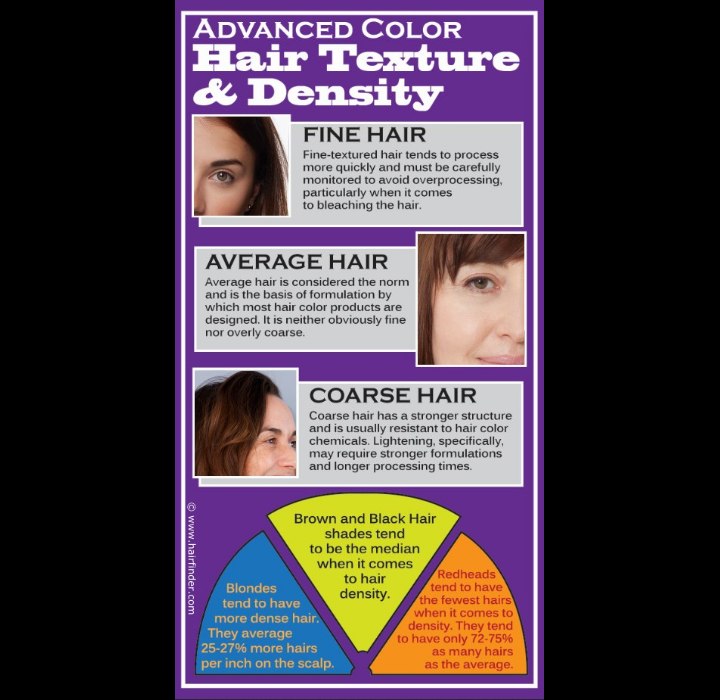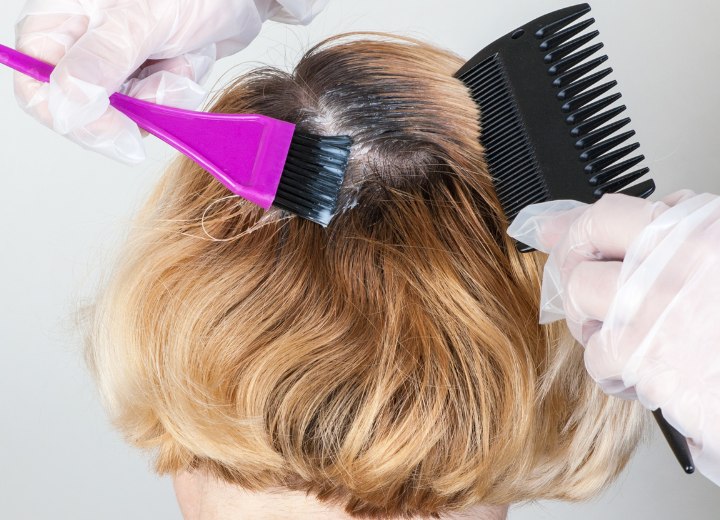Advanced Hair Color Tips

Hair Texture and Hair Density
Coloring hair – whether you are lightening the hair or simply adding color - requires that you take many things into consideration. Two of the more important things to take into account are the texture and the density of the hair you are dealing with. These two factors make up how "full" a head of hair appears to be.
As you know, texture refers to the diameter of the individual hairs on the head, while density is a measure of the number of hairs per unit area on the head. We've all heard people described as having "thick" hair. This expression is generally a factor of the density and texture of the hair combined.
One thing to note about hair density is that it can actually be categorized by hair color. Blondes tend to have the densest hair with around 27-30% more hairs per inch than would be found in brown or black shades. Those individuals with red hair tend to have the lowest density, with an average of 70-72% as many hairs on the head as are found in brown and black shades.
You should also be aware that the density and texture of the hair can vary on the same scalp from area to area. This can become an issue when dealing with hair coloring, and can require very close monitoring of the olor - especially when the hair is being lightened.
Coloring Considerations
Most hair color packaging - especially that found in hair color kits in supermarkets and drugstores - is designed to color a head of hair that is of average density, average texture, and around or less than shoulder length. This means that when the texture and density are greater than average, you may need more color in order to address the amount of hair you have.
There’s also the fact that the instructions for applying hair color are generally designed for hair that is of average density and texture. Coarse hair may require a longer processing time because it typically has a stronger structure and can often be resistant (which indicates low porosity, a measure of the ease with which the hair absorbs moisture).
Conversely, fine hair must be monitored carefully when coloring - particularly when lightening the hair - since it tends to process quicker and could be damaged by lightening processes if left on too long.

If you're dealing with hair that has noticeably different texture and density in different areas of the head, then you probably want to apply your color to the coarsest or densest areas first, and then apply color to the less coarse or dense areas after giving those areas a head start on processing. Even in these situations, be sure to carefully watch the less dense and finer-textured areas of the hair to make sure the processing doesn't result in damage.
A Note on Bleaching
When discussing bleaching the hair, it is especially important to consider the texture and density of the hair. In this situation, we are talking about the use of a peroxide developer and an added bleaching agent, rather than a lightening hair color formula. This type of processing is used to pre-lighten before adding color to achieve the desired results. In normal situations, bleaching agents are mixed with 10 or 20 volume peroxide developer.
When pre-lightening hair that is fine or has low density, you want to make sure that you don't overprocess any bleaching step. When lightening the hair, to help make the process safer, use only 10 volume developer with the bleaching agent when working with hair that is either fine or of low density. If the hair is both fine and of low density, you will want to be sure to use a 5-volume developer, which can be made by combining equal parts of 10-volume developer and a cream conditioner.
Conversely, if the hair is coarse and proves resistant as well, you may want to increase the strength of the developer to 30 volume, but always be sure to monitor the processing closely when using a stronger developer with a bleaching agent. You should also never use anything stronger than 30-volume developer with your bleaching agent when you are coloring your hair at home. If your hair needs such strong processing, you definitely want to use the services of a professional, in order to ensure safe, high-quality results.
©Hairfinder.com
See also:
The different wave patterns in hair and the specifics of the various colorig techniques
How hair length can be a player in the hair coloring process